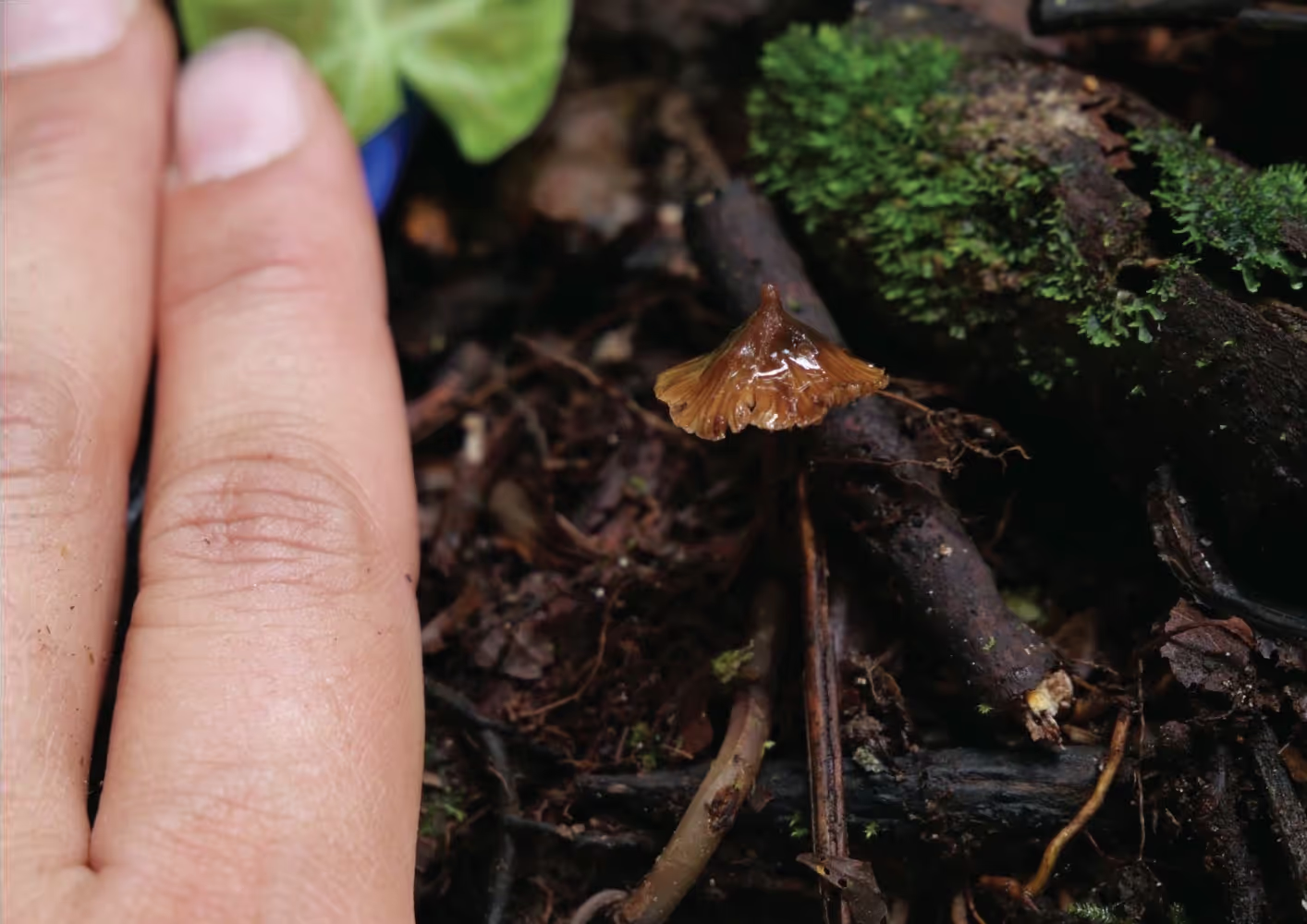Paul Stamets’ work of 40+ years as a mycologist inspired the character of Lieutenant Stamets in the “Star Trek: Discovery” series, made him the protagonist of the documentary Fantastic Fungi and has now been immortalized with the species Psilocybe stametsii (Dentinger & Furci, 2023).
February 28, 2023

FFungi Staff
FFungi Volunteer
A new species of magic mushroom has been named in honor of Paul Stamets, who is well known for inspiring hundreds of thousands of people around the world to love fungi.
The new species, named Psilocybe stametsii, was discovered in a cloud forest in Ecuador and has been collected twice: once in 2011 by Dr. Bryn Dentinger of the University of Utah and a colleague, and then again in 2022 by Giuliana Furci of the Fungi Foundation together with friends including author Robert Macfarlane and musician Cosmo Sheldrake. The mushroom was found in the Los Cedros Biological Reserve, which is an area protected under the Rights of Nature articles in the Ecuadorian constitution.
“It is an absolute joy to be able to honor Paul Stamets with a new species of mushroom. His contribution to the global appreciation of fungi is undisputed and unparalleled, and his relentless dedication to advancing mycology has inspired thousands of people around the world for decades, including myself”, commented Giuliana Furci, who co-published the new discovery using the Index Fungorum e-publishing tool hosted by the Royal Botanic Gardens, Kew, which is a modern approach to accelerating species discovery by circumventing the hurdles of conventional scientific journal publication for naming new species.
This is the first time a species has been named after Paul Stamets, and it is especially meaningful due to the fact that it is a mushroom from the genus Psilocybe, a group with ancestral uses that is now being used and studied as a therapeutic in modern medicine due to their production of psilocybin. Stamets has dedicated a large portion of his professional life to these fungi, publishing the book “Psilocybin Mushrooms of the World” in 1996. That year he also named a new species of Psilocybe after Dr. Andrew Weil (Psilocybe weilii), a prominent leader in the field of natural medicine, as well as the species Psilocybe azurescens in 1995. Before that, Paul authored a series of instructional books on how to cultivate gourmet and medicinal mushrooms, which remain the ultimate authoritative references for mushroom cultivation.
"I am deeply honored by this recognition – and excited to go on a field expedition to see this species in its natural habitat,” said Stamets about the new mushroom. “To be recognized like this is the greatest honor that a mycologist can receive, and that two renowned mycologists co-authored this discovery deepens my appreciation. I also feel a keen responsibility to further protect the mycodiversity of fungi in all their wondrous forms. They are truly fantastic!”
Regarding the species characteristics, Dr. Dentinger explains: “Psilocybe stametsii seems to be a solitary species, having been seen only twice and each time as a single, inconspicuous mushroom no taller than a matchstick. Like most other magic mushrooms, it is colored in shades of brown and blends in with its background of decaying leaves and soil. One notable feature is the sharp, pointy cap, an attribute shared by other close relatives. It is phylogenetically closest to an environmental DNA sequence from soil in China and evolutionarily distinct from the other closely related known species of Psilocybe described from Bolivia, Mexico and Puerto Rico”.
.avif)
Only between 5-10% of Fungi around the world are known, so documenting new species like this is critical to establish a baseline for biodiversity monitoring, and can provide new sources of data that could benefit human and planetary well-being. Fungi are neither plants nor animals, and although they are seldom recognized on an equal footing, in fact they are complex organisms that form a Kingdom of their own. “Many refer to macroscopic biodiversity as fauna and flora, but really we all should be using the three “F”s: Fauna, Flora and Funga”, emphasized the authors.
Click here for more information about the species.